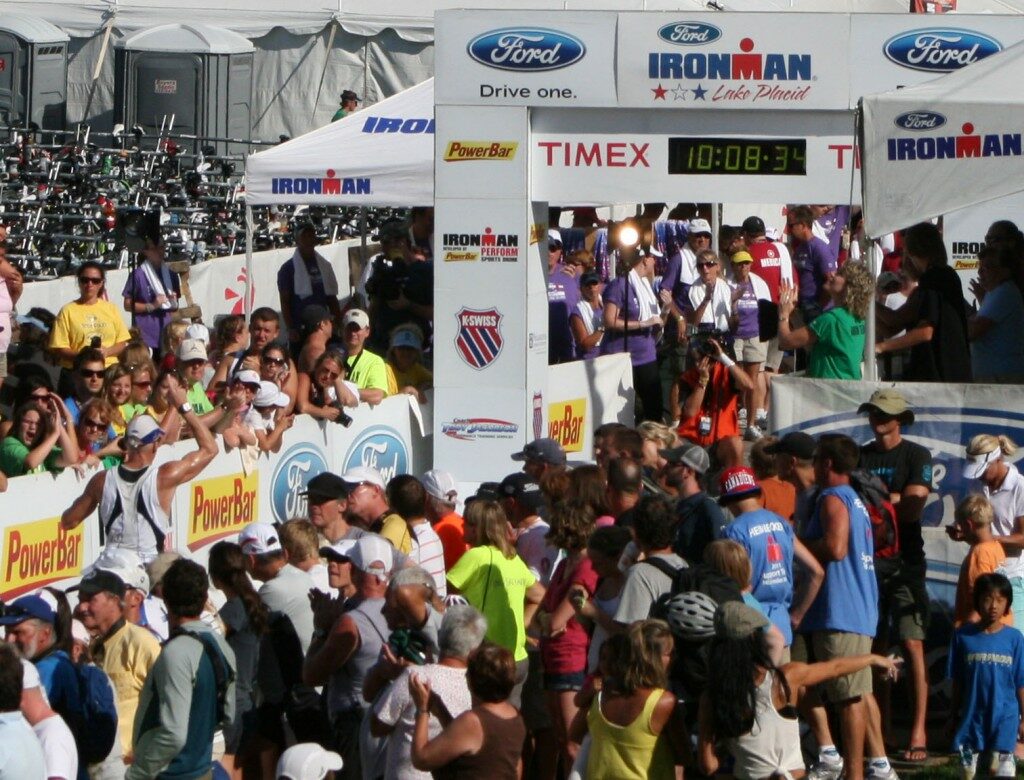If you are in the final months before your key A race, then you are probably in or getting ready to start the build (a.k.a. specific preparation) period. (Not sure what I mean by a build/specific prep period? Check out our post about the principles of periodization.)

During the build period, the main focus is on incorporating race-specific training. Given the increasing demands on your energy systems, recovery–while always important–becomes even more necessary to ensure that your body is ready for the next hard day of training.
Let’s briefly review 1) specificity, 2) intensity, and 3) recovery as they relate to the specific prep period of your training plan.
Specificity
The most important principle to keep in mind during the build period is specificity. This means that a certain number of your workouts should focus more intently on race conditions, functional strength training, and sport-specific activities.
To a certain extent, you should have been engaging in sport specific activities during the base phase. Clearly, if you are training for a half or full marathon, you’ve been running. Training for a triathlon? Swim, bike and run. However, during the base phase, your effort was more general, working on limiters or building a foundation for the race-specific work to come.
During the build phase, you will be become more specific in your efforts. For example, if you are going to be racing in hilly terrain, be sure to incorporate hill work to prepare your body for the specific conditions of the race course.
Swim likely to be in choppy water? Yep, you guessed it, work on your force and power to help you move through that water – and of course, get in some open water to practice.
Planning on riding in aero bars? Get in ’em!
Brick workouts, transition practice and transition runs should become a steady staple in your weekly plan.
There are a many ways that we can make our various training sessions more specific to race day conditions and demands. And, ideally, you would vary these throughout the various microcycles of your training plan.
However, there is no need to make each of your workouts race specific. Depending upon your experience and fitness level, you should identify about 1-3 race specific (RS) workouts per sport, per week. For example, a runner with several years of training experience may incorporate a hill session, a tempo session, and a race-pace long run in preparation for an upcoming marathon. For triathletes, this gets tricky as there are three sports to juggle, so understanding placement and combinations is important.
It is VERY important to note: you should not incorporate more of these types of workouts than you can adequately recover from, due to the way they tax the body from the increased intensity. The remainder of your workouts will continue to maintain the endurance.
 Specificity also means you want to nail down your race day fueling, so you should be practicing your nutrition during all of your long workouts, and during some of your intense workouts.
Specificity also means you want to nail down your race day fueling, so you should be practicing your nutrition during all of your long workouts, and during some of your intense workouts.
Intensity
Intensity can be measured based on a mix of rate of perceived exertion, heart rate, power and pace/speed. (In a previous post, we explained by relying solely on pace or speed is a bad idea. You can read that explanation here.) The level of intensity of your RS workouts follows from the principle of specificity and is dependent upon the type and duration of the event you are planning as your key “A” race. While not every RS workout needs to be high intensity, a certain number of them should mimic race effort – at least in part.
Let’s take a triathlete as an example. We’ll call him John. John has experience in short-course triathlon, and he is preparing for his first Ironman. Given this history, we would expect John to complete the Ironman at a steady aerobic pace, what is frequently referred to as Zone 2 – or about 70-80% of his max HR effort. (For a description of the different HR, see this post.) Therefore, during his long rides, he should be spending key blocks of time in this zone of intensity. Same thing with swims and runs.
Now, this is not to say that long course athletes don’t benefit from higher intensity workouts – they do. But, in the case of a first-time Ironman hopeful, zone 4 and 5 workouts are not as important as developing a feel for race-pace intensity. For this athlete, we would rather give him higher intensity workouts in the form of hill repeats, or strength sessions in the pool. These would require more strength/force efforts, rather than all-out efforts on the track.

Recovery
Adequate recovery is CENTRAL to allowing positive adaptations to training. Otherwise, we build too much fatigue in our bodies, which does not allow our bodies to adapt to the training load and become stronger. Doing every workout as long and as hard as we can will only make us slower in the long term. In extreme cases, it will lead to injury and overtraining syndrome.
So, we privilege recovery and build the workouts around that.
We previously wrote a post outlining various recovery options, in which we discussed the role of active recovery, smart nutrition and hydration, and rest days. You can read more about those methods here. Other options to help promote recovery include stretching, compression gear, massage/foam rolling, active release technique, sleep, and ice baths.
A properly planned and executed build period will build upon the endurance strength you gained during the base phase, and dial it in to prepare you for race-day execution, power and speed. While there are many ways to strategize effectively the specific details of a build phase, specificity, intensity and recovery should be the general principles that guide the process.
